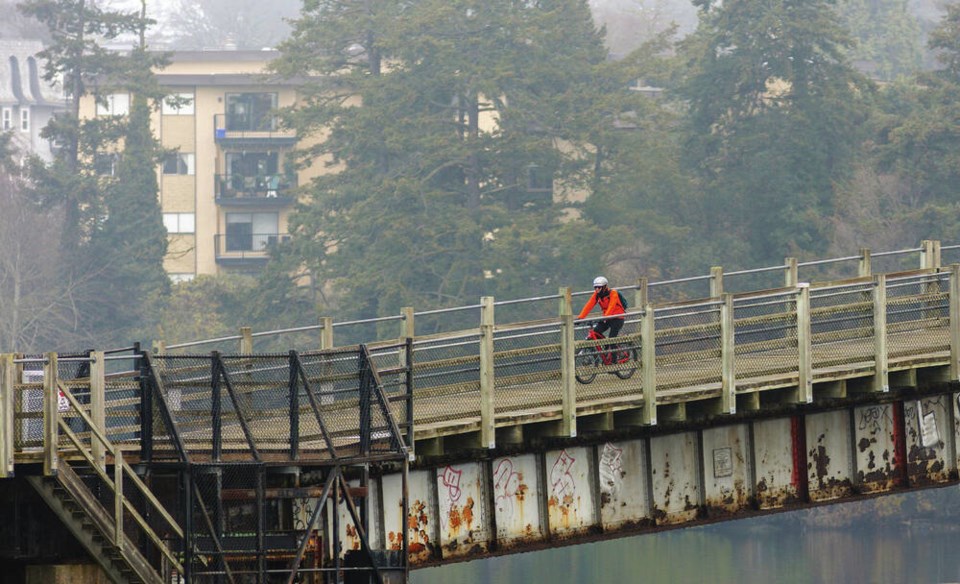Islanders — and others in sa国际传媒 — can expect a cooler, wetter winter than last year’s slightly more balmy conditions.
It’s all thanks to a switch in climate patterns over the Pacific Ocean, with the warm, dry characteristics of El Niño giving way to a La Niña system — prone to lower temperatures and more precipitation.
The increased precipitation from La Niña tends to be very pronounced on the west coast and in the Rockies, which could ease the dry conditions that increased the risk of wildfires in those regions, said Environment sa国际传媒 research scientist Bill Merryfield.
Environment sa国际传媒 meteorologist Matt Loney said the return of La Niña marks the end of a one-year respite.
“We had three seasons of La Niña then last year, which was El Niño, and now we’re back to La Niña,” Loney said. “It’s not guaranteed, but it loads the dice in favour of a cooler, wetter Pacific Northwest.”
A La Niña pattern — la niña is Spanish for “little girl” and el niño is Spanish for “little boy”— happens when trade winds push more warm water toward Asia, causing cold water off South America to come to the surface and push the jet stream north.
The result tends to be drought in the southern United States and heavy rain and flooding in the Pacific Northwest and other parts of sa国际传媒, according to the National Oceanic and Atmospheric Administration.
Predicting the season’s weather with more precision is difficult because the weather models meteorologists use extend only for about 10 days, Loney said.
In the short term, parts of sa国际传媒 can expect a rainy weekend “and beyond that signs are pointing to more of a typical cold trough setting up off the west coast,” he said.
“So by mid-month I would expect we might even get some lowering freezing levels and precipitation.”
That could mean snow in some low-lying areas, but it’s not yet clear, he said.
According to a chart posted by Environment sa国际传媒 showing the chances of a white Christmas in 45 Canadian cities — based on 67 years of weather records — odds of a white Christmas in Victoria are 12 per cent.
In Iqaluit, Kenora, Whitehorse and Yellowknife, it’s 100 per cent, while Winnipeg, Timmins and Goose Bay are close behind at 99 per cent.
Beyond Christmas, a typical Canadian winter is on tap for most of the country, despite above-normal temperatures, Environment sa国际传媒 said Wednesday.
Last year’s warm winter forced the closure of Ottawa’s iconic Rideau Canal rink “for all but a handful of bumpy skating days,” and it’s still too early to say whether the world’s longest skating rink will be open this year.
Even with a La Niña system, Environment sa国际传媒 is predicting above-normal winter temperatures for northern Ontario and Quebec, Nunavut and Newfoundland and Labrador.
Sea ice is expected to develop very late in Hudson Bay, and officials said there is a “near certainty” of above-normal temperatures in that region as a result.
Weather models indicate there could be less snow than usual in December in Quebec and the Maritimes.
Environment sa国际传媒 said climate change is causing sa国际传媒’s temperatures to rise at a rate that’s about twice the global rate of warming, and the effect is even more pronounced in the Arctic.
That’s leading to extremely warm sea-surface temperatures in the Atlantic, officials said.
Environment sa国际传媒 said it’s launching a pilot project in 2025 to indicate whether human-caused climate change had an impact on the likelihood of severe weather events.
The model will take current climate simulations and compare them to simulations with greenhouse-gas levels that are in line with the pre-industrial era, officials said.
“It looks at how much the chance of this particular event that’s being looked at is either elevated or reduced by the human influences,” Merryfield said.
Environment sa国际传媒 will rank the influence of human-caused climate change on a particular weather event, eventually incorporating extreme precipitation events, as well.



